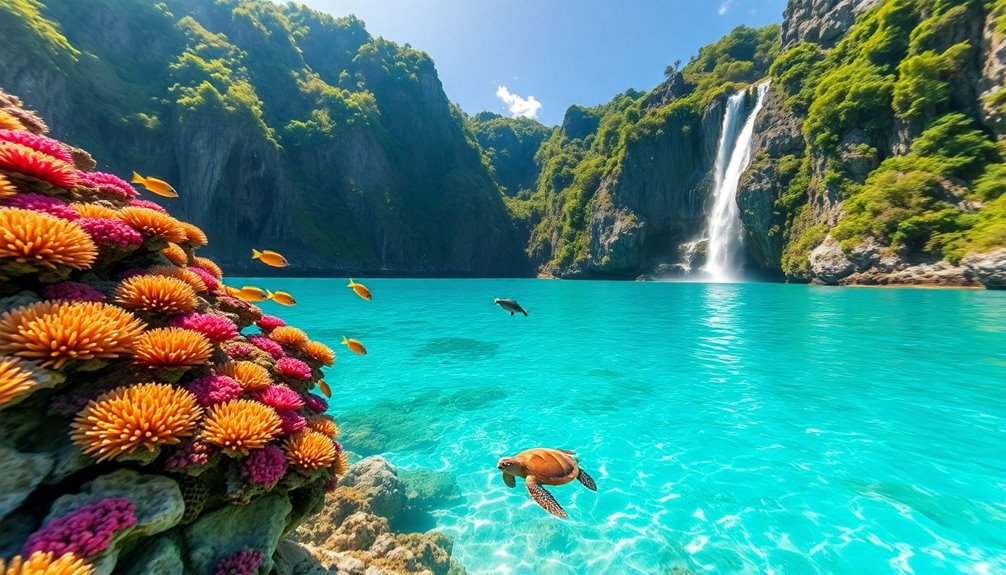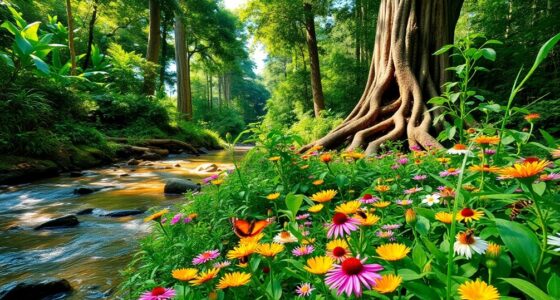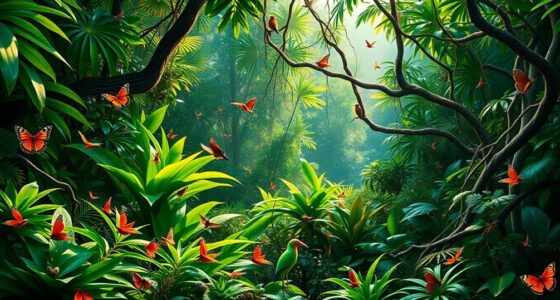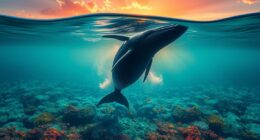If you're craving unforgettable biodiversity adventures, search no more than these five stunning destinations. Experience the lush wonders of Monteverde Cloud Forest in Costa Rica, with its vibrant wildlife and unique ecosystems. Explore Australia's Daintree Rainforest and the Great Barrier Reef, teeming with rare species and breathtaking coral. Don't miss Peru's Pacaya Samiria National Reserve, a crucial wetland rich in birdlife. The Pantanal in Brazil boasts the world's largest tropical wetland while New Zealand's South Island offers breathtaking landscapes and unique species. Each spot promises unforgettable experiences, and there's much more to discover about these natural treasures.
Key Takeaways
- Monteverde Cloud Forest, Costa Rica: Explore diverse ecosystems with over 400 bird species and 2,500 plant species in a unique cloud-covered environment.
- Daintree Rainforest, Australia: Discover ancient ecosystems and unique wildlife, including the endangered cassowary, with access to the Great Barrier Reef.
- Pacaya Samiria National Reserve, Peru: Experience the largest protected wetland in Peru, home to over 1,000 bird species and vital for Amazon conservation.
- Pantanal, Brazil: Visit the world's largest tropical wetland, rich in biodiversity, featuring jaguars, capybaras, and numerous bird species.
- South Island, New Zealand: Encounter extraordinary biodiversity in stunning landscapes, including endangered species and multiple National Parks dedicated to conservation efforts.
Monteverde Cloud Forest, Costa Rica

Nestled in the heart of Costa Rica, the Monteverde Cloud Forest beckons nature lovers with its breathtaking biodiversity. You'll find over 400 species of birds, including the endangered quetzal, and a myriad of unique flora and fauna thriving in the lush environment.
This protected area, characterized by its persistent cloud cover, supports more than 2,500 plant species, such as orchids and ferns, which create vibrant habitats for diverse wildlife. The cloud forest plays an important role in climate regulation, enhancing local weather and contributing to global conservation efforts.
Daintree Rainforest and Great Barrier Reef
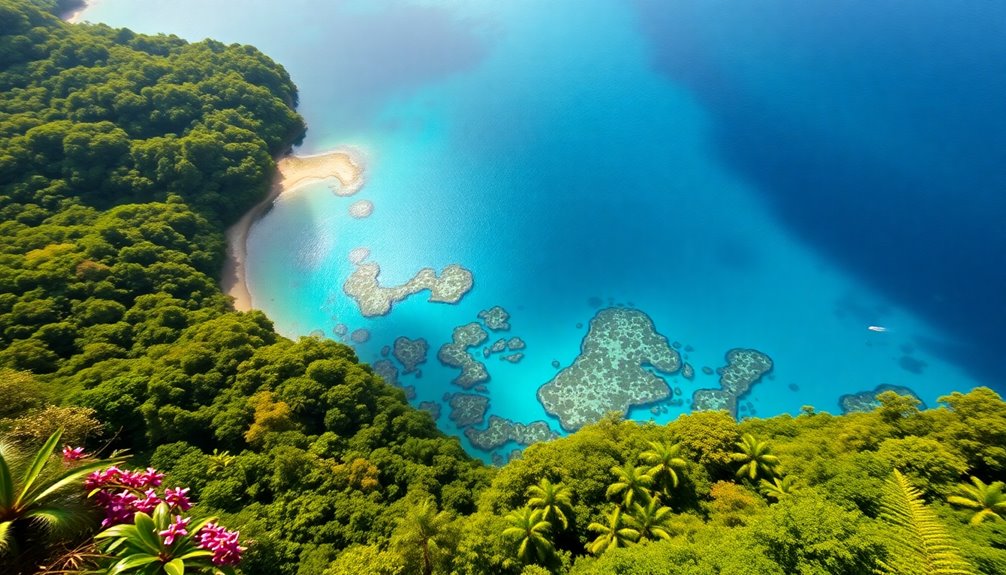
As you step into the Daintree Rainforest, you'll find yourself immersed in one of the oldest ecosystems on the planet, teeming with life and wonder.
This UNESCO World Heritage Site is renowned for its incredible biodiversity, housing unique flora and fauna, including endangered species like the cassowary and tree kangaroo.
Just adjacent lies the Great Barrier Reef, the largest coral reef system supporting vibrant marine life.
Here are three highlights of your visit:
- Explore diverse ecosystems that showcase ecological significance.
- Participate in conservation initiatives that promote sustainable tourism.
- Discover the rich marine life, with over 1,500 fish species and 400 coral types.
Together, these wonders exemplify the importance of protecting our planet's natural treasures.
Pacaya Samiria National Reserve, Peru
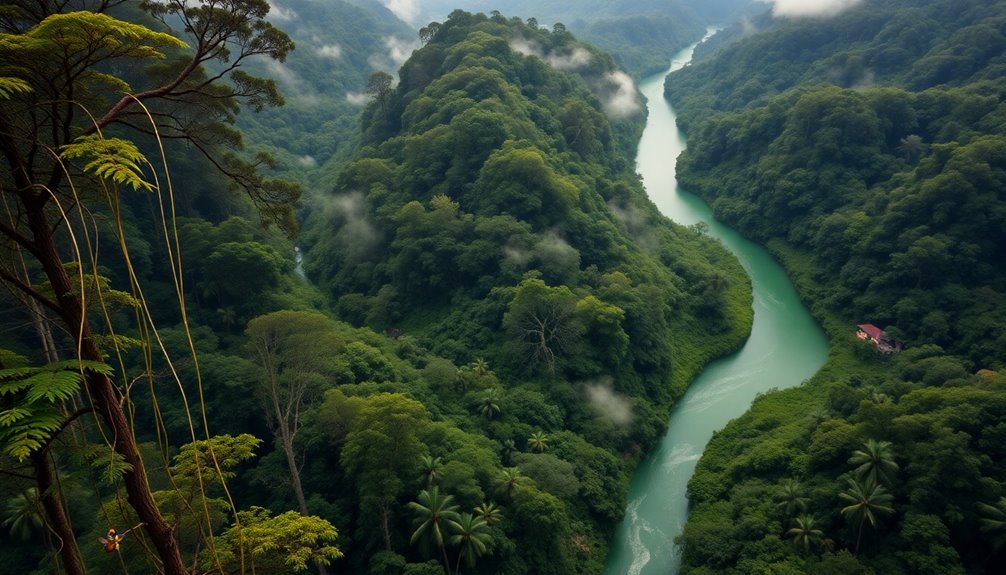
When you venture into Pacaya Samiria National Reserve, you're stepping into the largest protected wetland in Peru, a vast expanse of approximately 20,000 square kilometers brimming with diverse wildlife.
This biodiversity hotspot showcases rich biodiversity, hosting over 1,000 bird species, including the endangered Amazonian manatee and the iconic hoatzin, making it a dream for birdwatching enthusiasts.
The unique ecosystems of flooded forests, rivers, and lakes are critical habitats for aquatic and terrestrial species like pink river dolphins and jaguars.
As part of the Amazon Basin, this reserve plays a crucial role in global conservation efforts while supporting local communities through sustainable ecotourism initiatives.
Visiting Pacaya Samiria means witnessing nature's wonders while contributing to its preservation.
Pantanal, Brazil

After exploring the wonders of Pacaya Samiria National Reserve, the Pantanal in Brazil offers another breathtaking glimpse into the world's largest tropical wetland.
This incredible ecosystem boasts rich biodiversity, making it a must-visit for wildlife enthusiasts.
Here are three highlights you shouldn't miss:
- Diverse Species: Encounter over 600 bird species, along with large mammals like jaguars and capybaras.
- Unique Ecosystems: Explore marshes, grasslands, and forests that support a wide range of endemic flora and fauna.
- Conservation Efforts: Discover sustainable tourism initiatives that protect endangered species and promote the area's remarkable biodiversity.
Visiting the Pantanal not only enriches your experience but also contributes to the ongoing conservation efforts that safeguard this crucial habitat in Brazil.
South Island, New Zealand
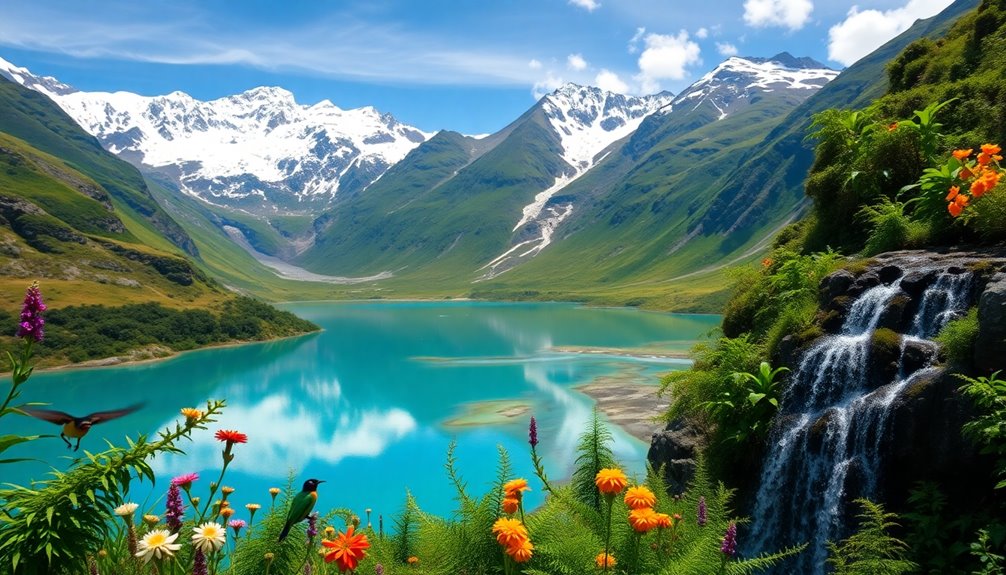
Nestled in the southwestern Pacific, New Zealand's South Island beckons with its extraordinary biodiversity and breathtaking landscapes. This region is a prime example of sustainable travel destinations, boasting numerous National Parks dedicated to conservation efforts.
You'll discover unique species, like the endangered brown kiwi and Hector's dolphin, thriving in diverse ecosystems ranging from the Southern Alps to lush rainforests. Fiordland National Park, a UNESCO World Heritage site, showcases dramatic fjords and rare flora, including the takahe bird.
Adventure tourism flourishes here, with activities like hiking the famous Routeburn Track and exploring Aoraki/Mount Cook National Park. The South Island not only captivates with its beauty but also champions renewable energy and biodiversity, ensuring it remains a haven for nature lovers.
Frequently Asked Questions
What Place Has the Best Biodiversity?
When you're exploring the question of the best biodiversity, Brazil often tops the list.
With its Amazon Rainforest, you'll encounter an incredible variety of species, including 120,000 invertebrates and 9,000 vertebrates.
However, Indonesia's Birds Head Seascape and Costa Rica's protected areas also boast remarkable diversity.
Each location offers unique ecosystems and wildlife, making it tough to choose just one.
Ultimately, your interests will guide you to the destination that captivates you most.
What Are the Top 5 Biodiversity Hotspots?
Imagine a vibrant tapestry of life, where each thread represents a unique species. The top five biodiversity hotspots you should know include the Amazon rainforest, Madagascar, the Eastern Himalayas, the Caribbean Islands, and the Indo-Burma region.
Each of these areas boasts incredible diversity and faces significant threats. By understanding their importance, you'll appreciate why protecting these treasures is essential for our planet's future and the myriad species that call them home.
Where Are the 3 Most Biodiverse Places on Earth?
When you think of the most biodiverse places on Earth, the Amazon Rainforest, Madagascar, and the Coral Triangle come to mind.
In the Amazon, you'll find a staggering variety of plant and insect species.
Madagascar's unique wildlife, like lemurs, is found nowhere else.
Meanwhile, the Coral Triangle boasts an incredible array of coral and fish species.
Exploring these areas gives you a glimpse of nature's astonishing diversity and beauty.
Where Are the Top 7 Biodiversity Hotspots in the World?
When you think of breathtaking biodiversity, consider the Amazon, Madagascar, and the Coral Triangle.
Next, explore the Himalayan range, where diverse ecosystems thrive.
Don't forget Sundaland, home to orangutans and the Sumatran tiger.
You'll also find the Cape Floristic Region, bursting with unique plant life, and the Indo-Burma area, rich in flora and fauna.
Each hotspot offers a spectacular showcase of nature's wonders, waiting for your discovery!
Conclusion
Whether you're wandering through the misty trails of Monteverde or snorkeling in the vibrant waters of the Great Barrier Reef, each of these biodiversity hotspots offers a unique glimpse into our planet's wonders. Don't miss your chance to explore the lush depths of the Daintree or the sprawling wetlands of the Pantanal. So grab your smartphone and pack your bags; nature's calling, and it's a message you won't want to scroll past.
